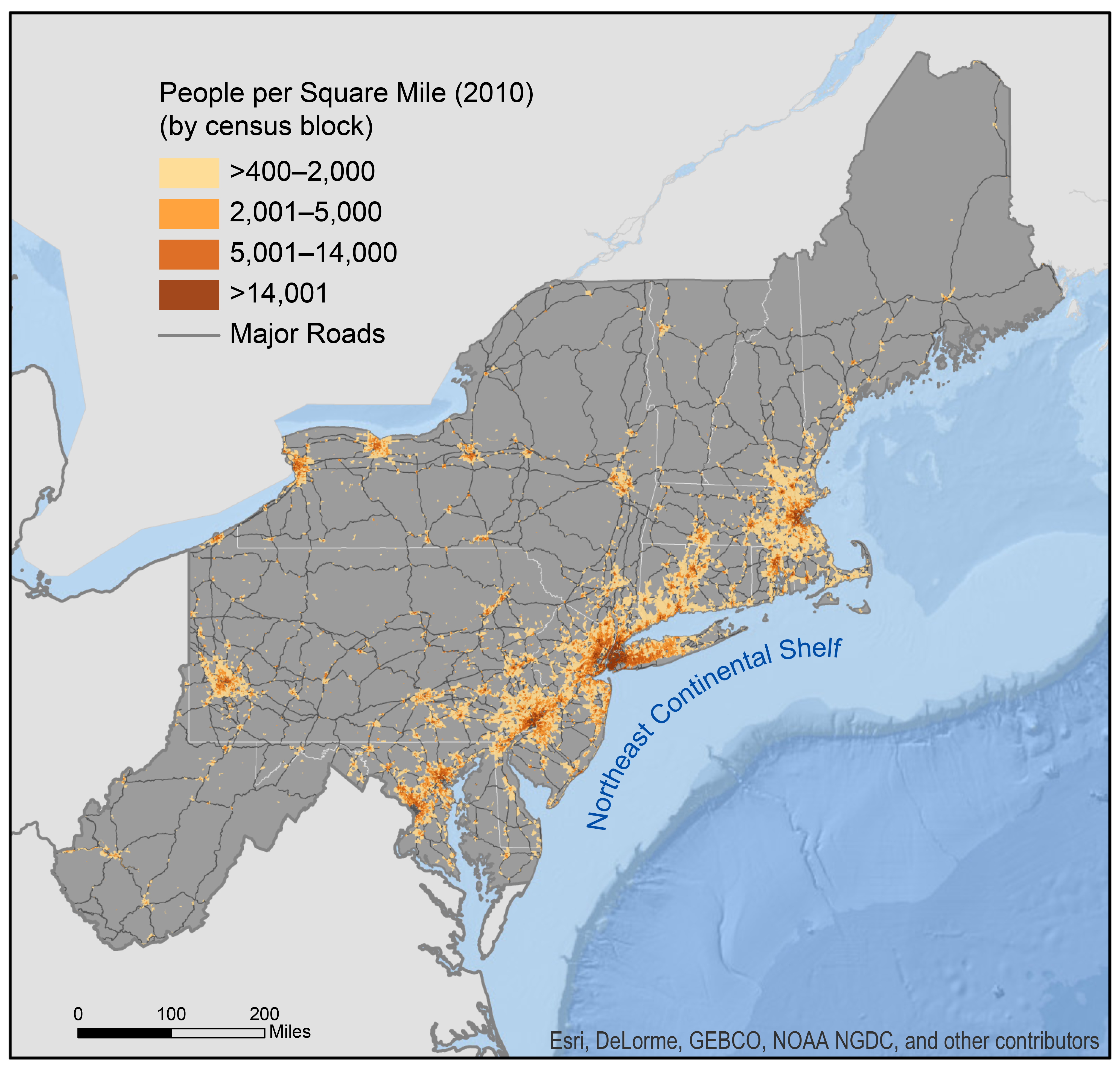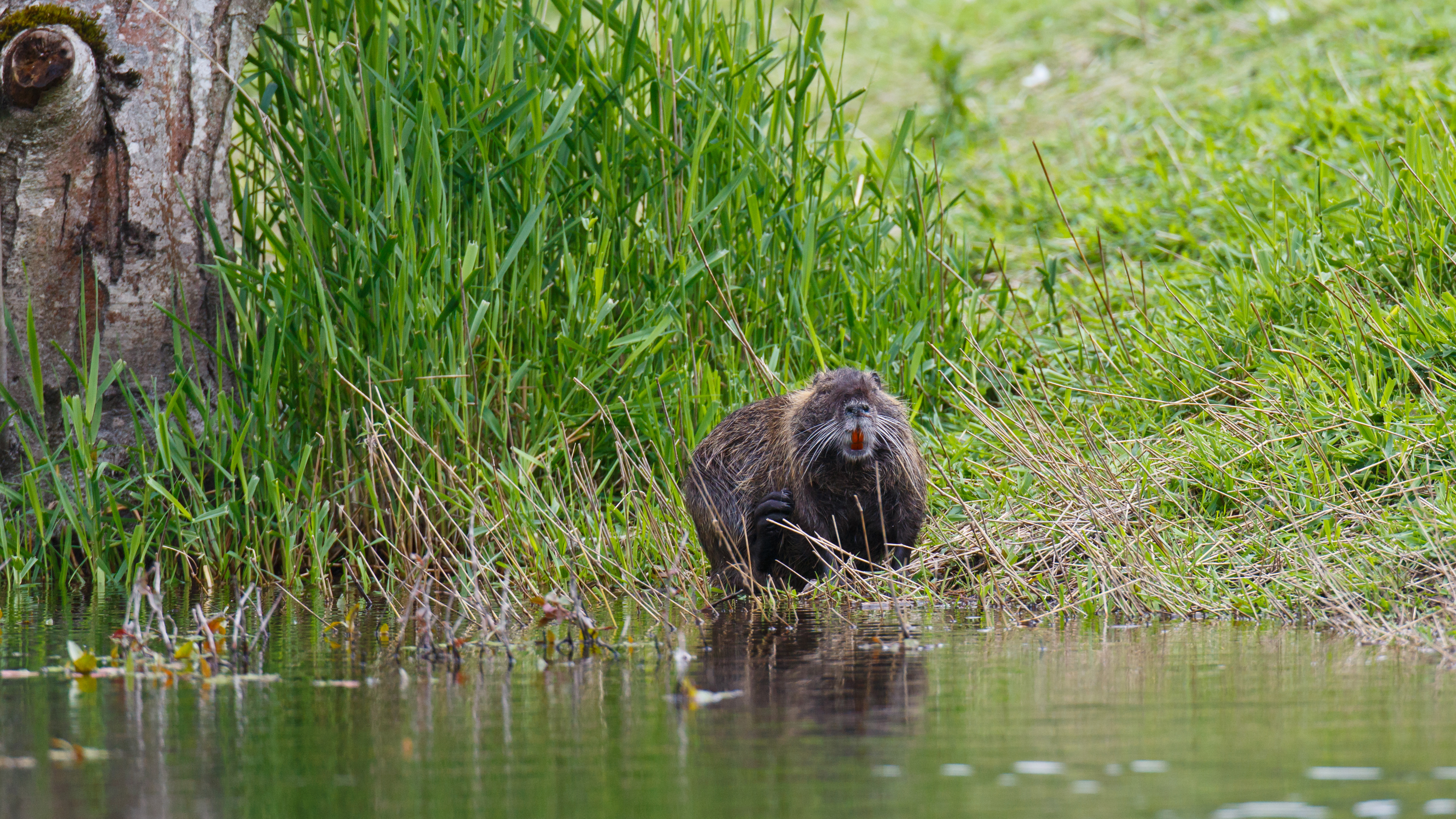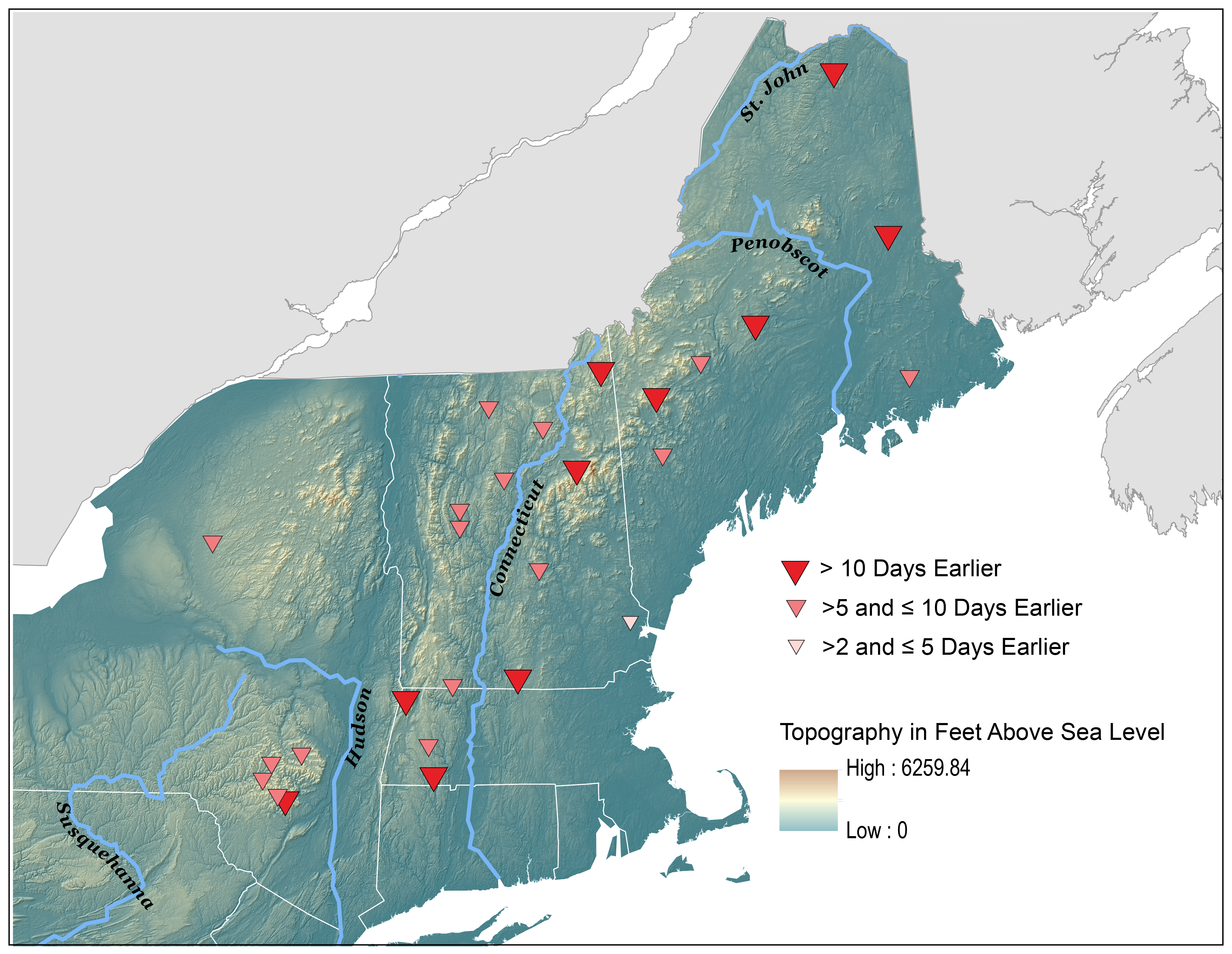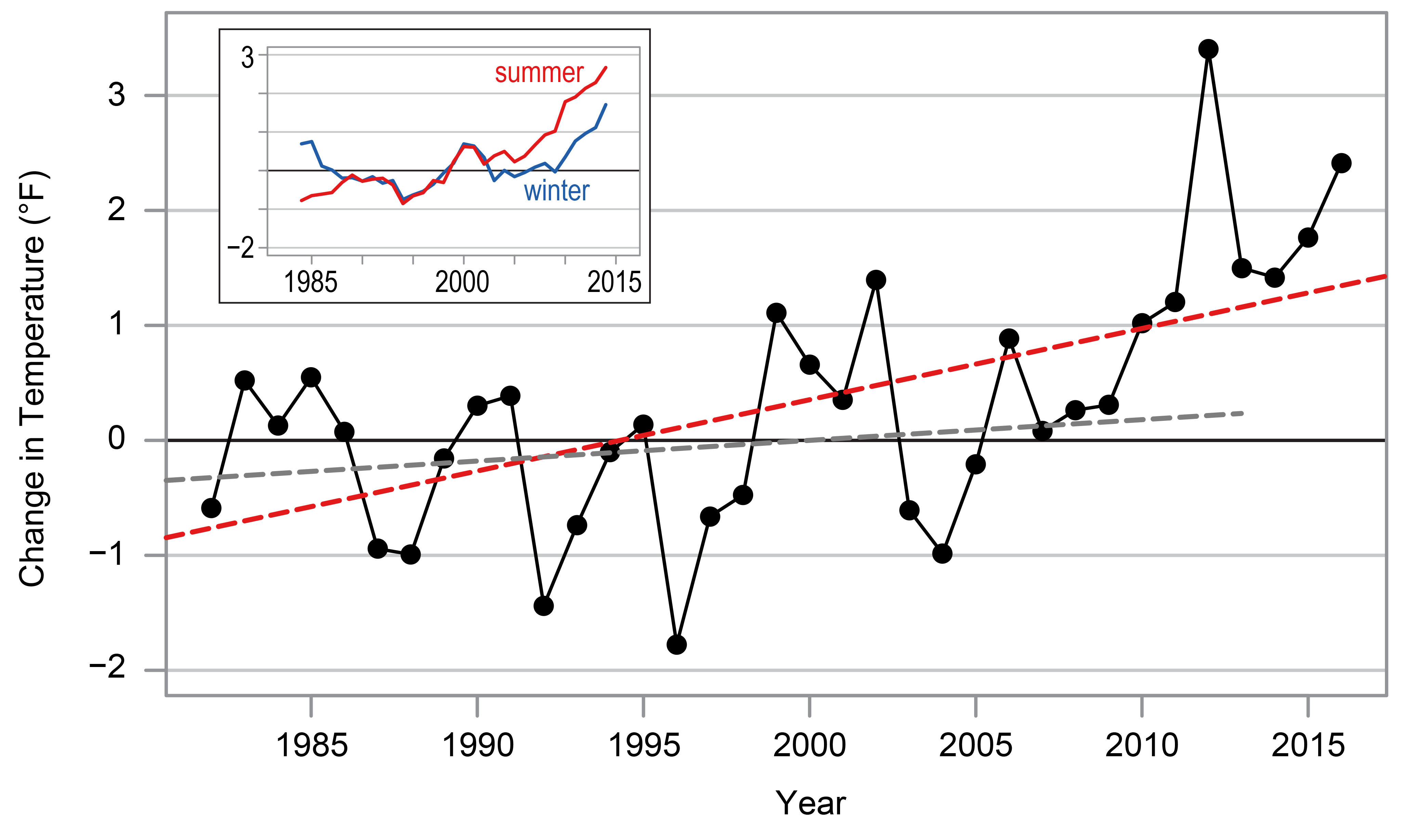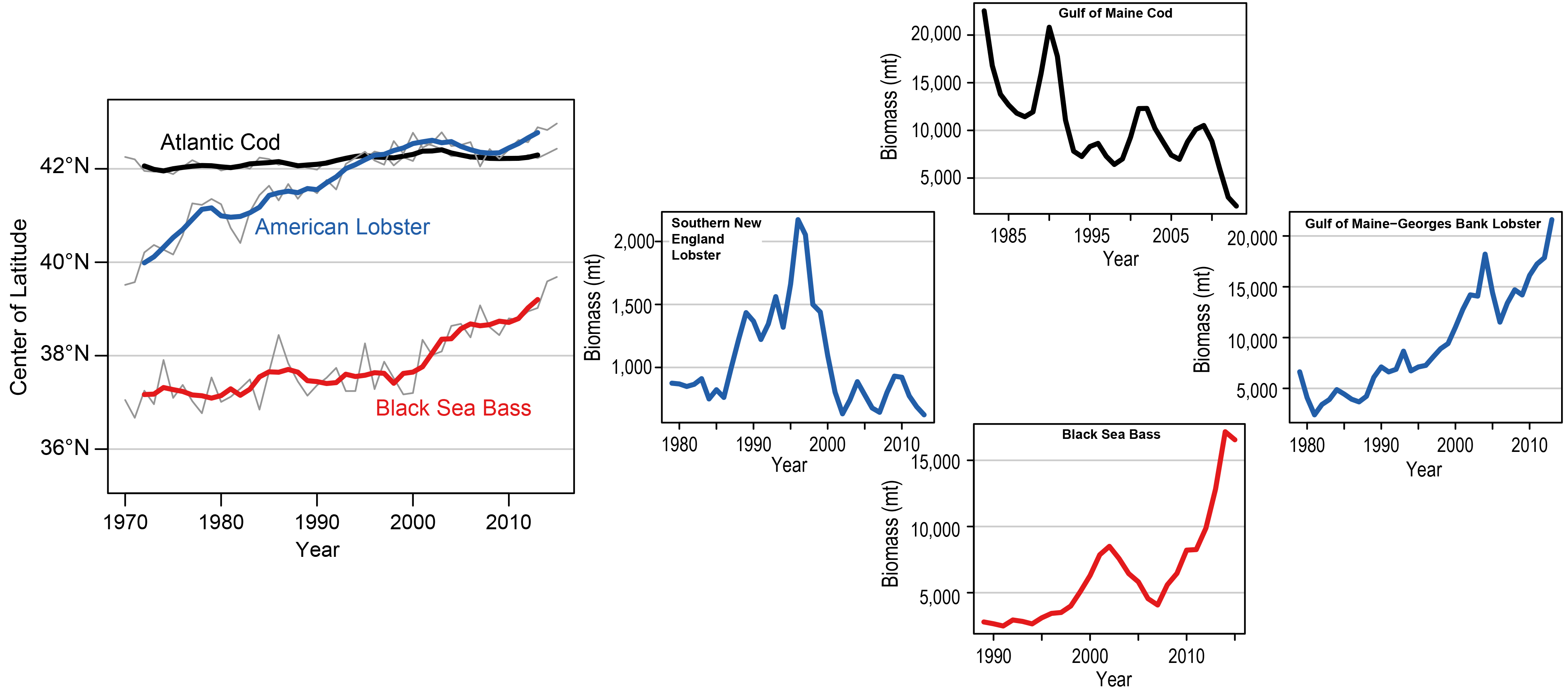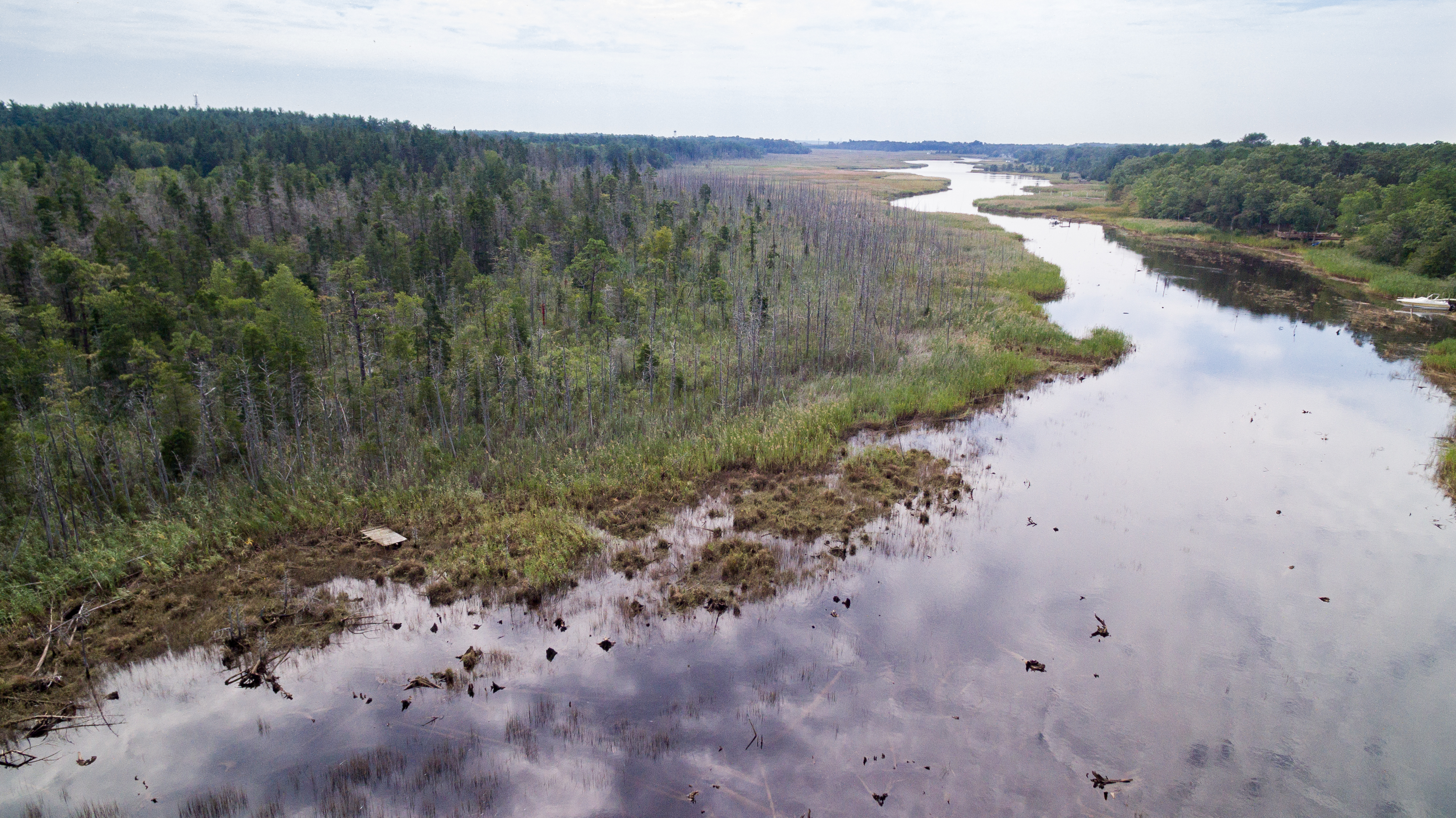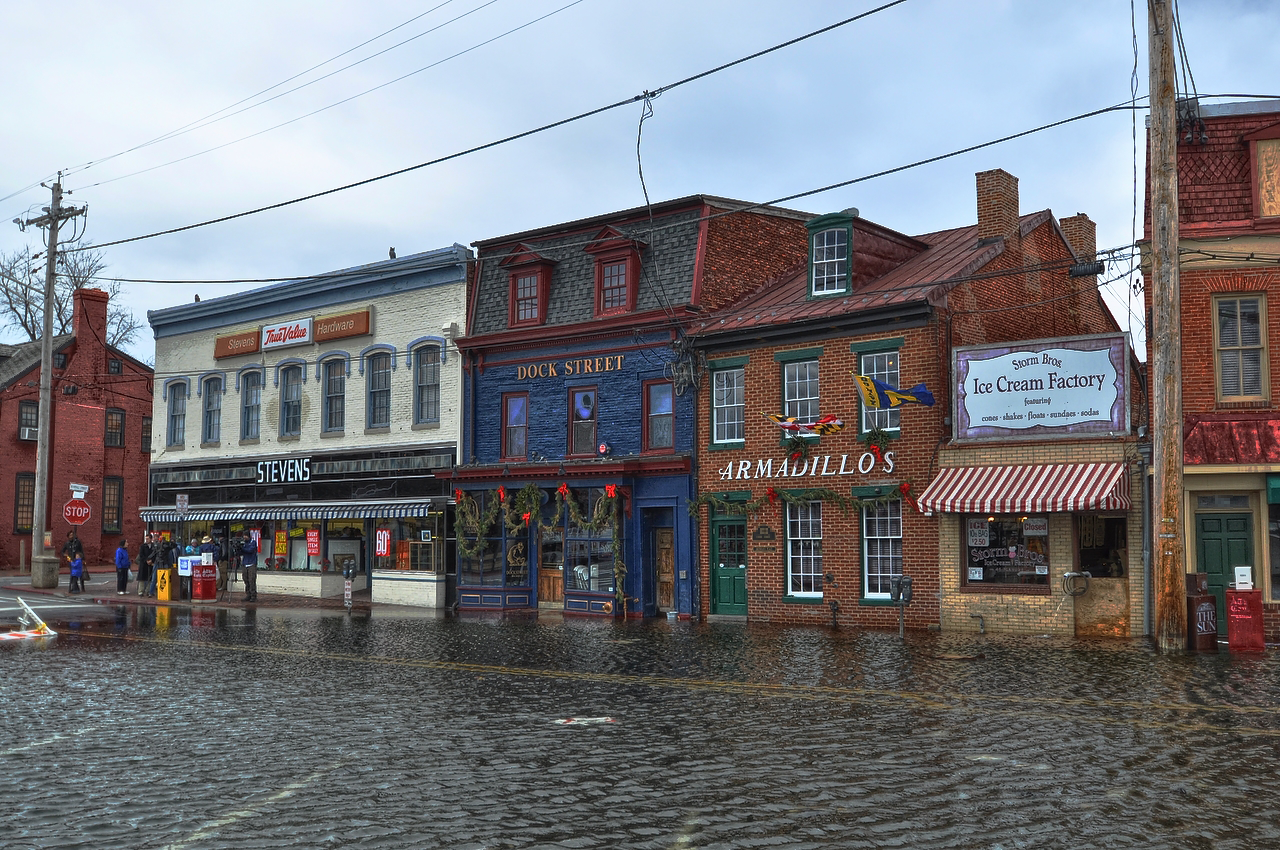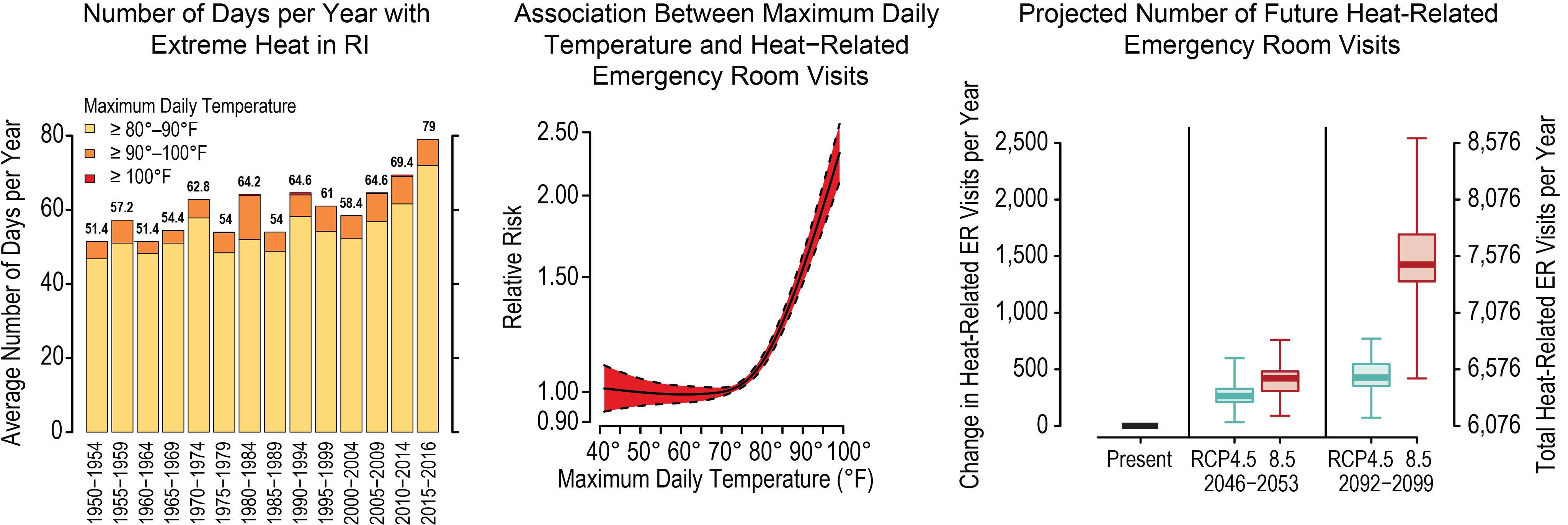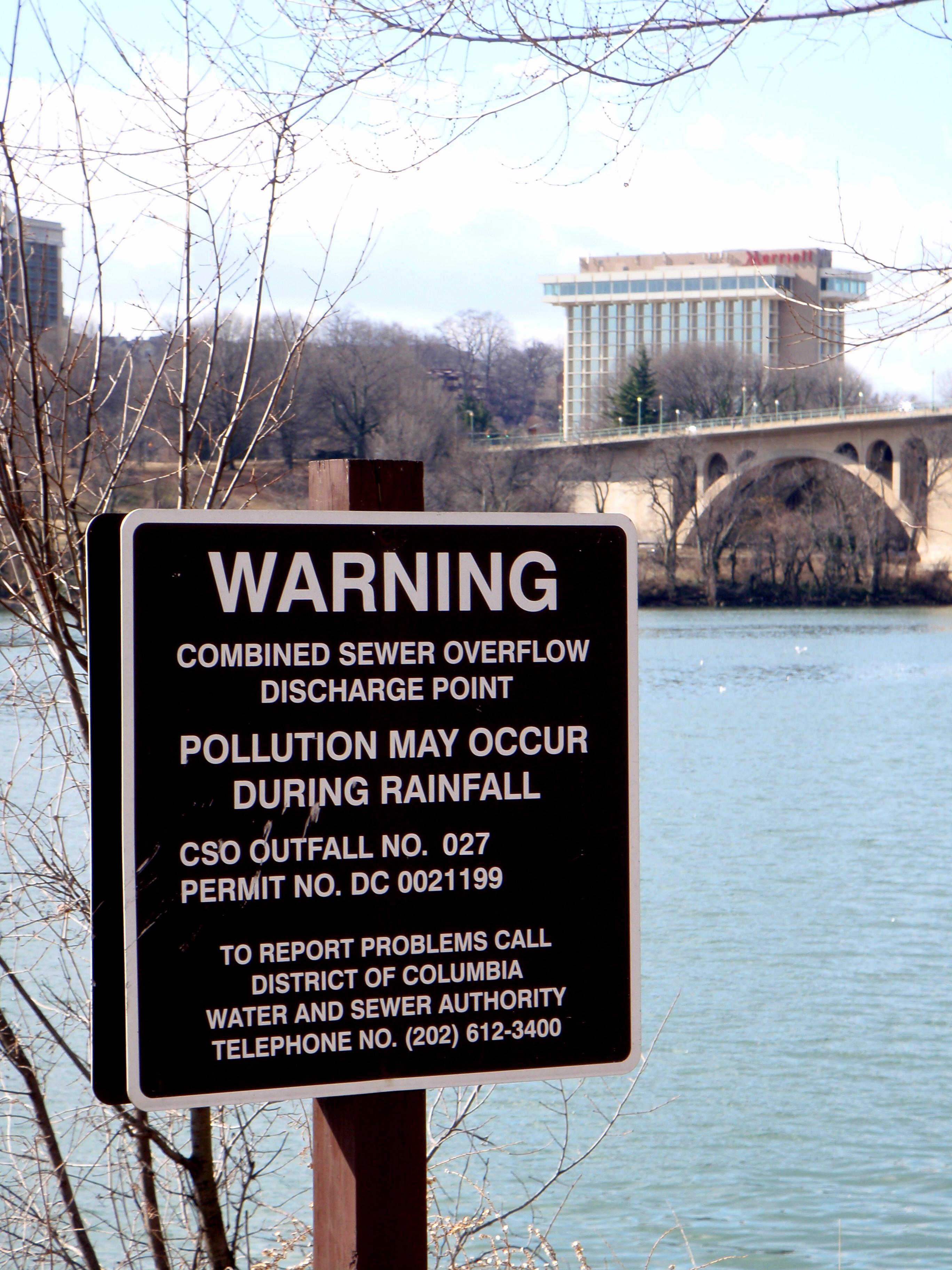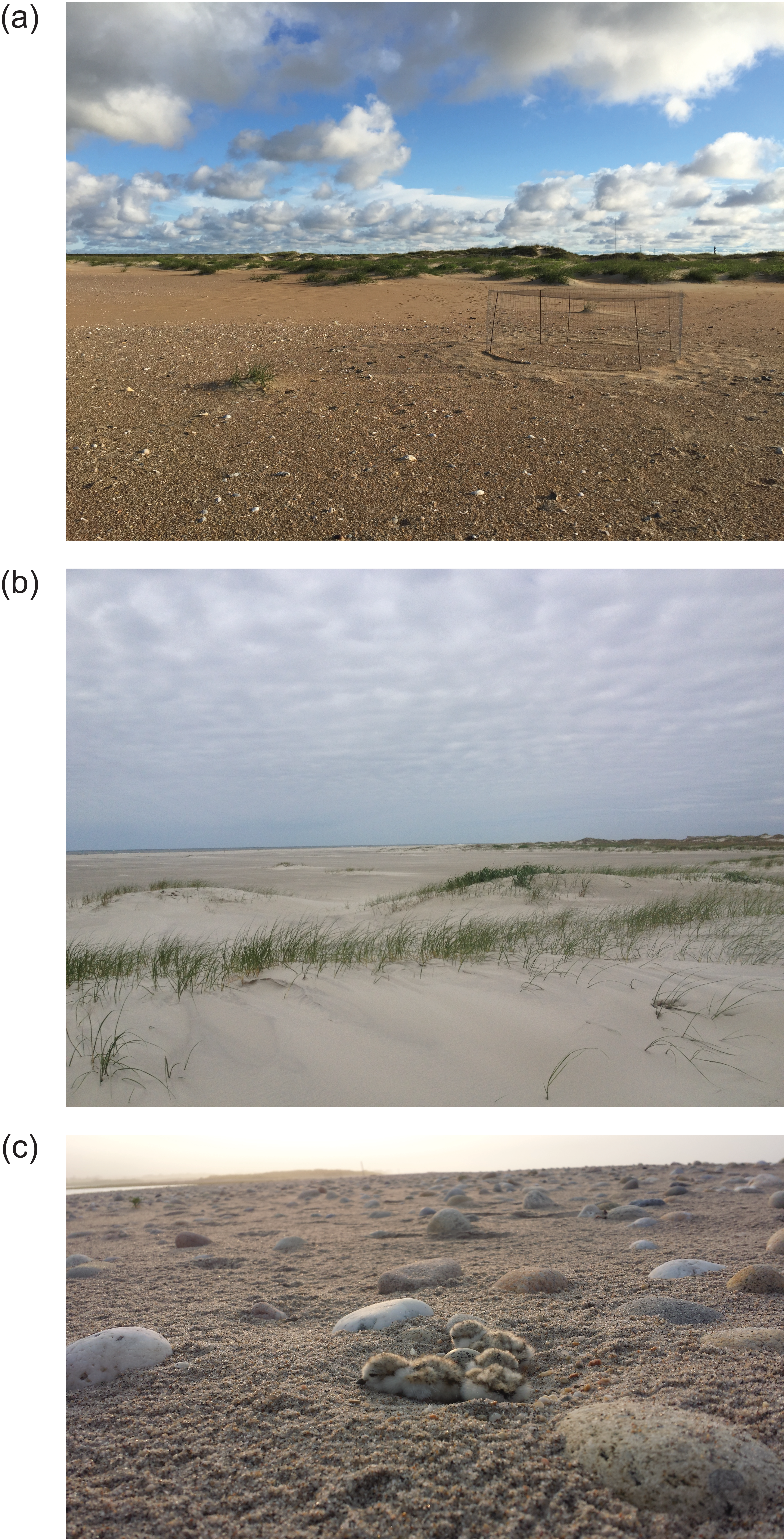It is understood that authors for a regional assessment must have scientific and regional credibility in the topical areas. Each author must also be willing and interested in serving in this capacity. Author selection for the Northeast chapter proceeded as follows:
First, the U.S. Global Change Research Program (USGCRP) released a Call for Public Nominations. Interested scientists were either nominated or self-nominated and their names placed into a database. The concurrent USGCRP Call for Public Nominations also solicited scientists to serve as chapter leads. Both lists were reviewed by the USGCRP with input from the coordinating lead author (CLA) and from the National Climate Assessment (NCA) Steering Committee. All regional chapter lead (CL) authors were selected by the USGCRP at the same time. The CLA and CL then convened to review the author nominations list as a “first cut” in identifying potential chapter authors for this chapter. Using their knowledge of the Northeast’s landscape and challenges, the CLA and CL used the list of national chapter topics that would be most relevant for the region. That topical list was associated with scientific expertise and a subset of the author list.
In the second phase, the CLA and CL used both the list of nominees as well as other scientists from around the region to build an author team that was representative of the Northeast’s geography, institutional affiliation (federal agencies and academic and research institutions), depth of subject matter expertise, and knowledge of selected regional topics. Eleven authors were thus identified by December 2016, and the twelfth author was invited in April 2017 to better represent tribal knowledge in the chapter.
Lastly, the authors were contacted by the CL to determine their level of interest and willingness to serve as experts on the region's topics of water resources, agriculture and natural resources, oceans and marine ecosystems, coastal issues, health, and the built environment and urban issues.
The first two drafts of the Northeast chapter were structured around the themes of water resources, agriculture and natural resources, oceans and marine ecosystems, coastal issues, health, and the built environment and urban issues. During the USGCRP-sponsored Regional Engagement Workshop held in Boston on February 10, 2017, feedback was solicited from approximately 150 online participants (comprising transportation officials, coastal managers, urban planners, city managers, fisheries managers, forest managers, state officials, and others) around the Northeast and other parts of the United States, on both the content of these topical areas and important focal areas for the region. Additional inputs were solicited from other in-person meetings such as the ICNet workshop and American Association of Geographers meetings, both held in April 2017. All feedback was then compiled with the lessons learned from the USGCRP CLA-CL meeting in Washington, DC, also held in April 2017. On April 28, 2017, the author team met in Burlington, Vermont, and reworked the chapter’s structure around the risk-based framing of interest to 1) changing seasonality, 2) coastal/ocean resources, 3) rural communities and livelihoods, 4) urban interconnectedness, and 5) adaptation.
Key Message 1: Changing Seasons Affect Rural Ecosystems, Environments, and Economies
The seasonality of the Northeast is central to the region’s sense of place and is an important driver of rural economies. Less distinct seasons with milder winter and earlier spring conditions (very high confidence) are already altering ecosystems and environments (high confidence) in ways that adversely impact tourism (very high confidence), farming (high confidence), and forestry (medium confidence). The region’s rural industries and livelihoods are at risk from further changes to forests, wildlife, snowpack, and streamflow (likely).
Description of evidence base
Multiple lines of evidence show that changes in seasonal temperature and precipitation cycles have been observed in the Northeast.3,4,109,110,124,154,158 Projected increases in winter air temperatures under lower and higher scenarios (RCP4.5 and RCP8.5)3,4 will result in shorter and milder cold seasons, a longer frost-free season,3 and decreased regional snow cover and earlier snowmelt.108,109,110,395,396,397 Observed seasonal changes to streamflows in response to increased winter precipitation, changes in snow hydrology,112,138,139,140 and an earlier but prolonged transition into spring68 are projected to continue.105
These changes are affecting a number of plant and animal species throughout the region, including earlier bloom times and leaf-out,71,73,158 spawning,164 migration,84,166,398 and insect emergence,74 as well as longer growing seasons,72 delayed senescence, and enhanced leaf color change.103 Milder winters will likely contribute to the range expansion of wildlife and insect species,399 increase the size of certain herbivore populations78 and their exposure to parasitism,81,82 and increase the vulnerability of an array of plant and animal species to change.66,103,143
Warmer winters will likely contribute to declining yields for specialty crops35 and fewer operational days for logging88 and snow-dependent recreation.115,116,118 Excess moisture is the leading cause of crop loss in the Northeast,35 and the observed increase in precipitation amount, intensity, and persistence is projected to continue under both lower and higher scenarios.3,4,124,125
Major uncertainties
Warmer fall temperatures affect senescence, fruit ripening, migration, and hibernation, but are less well studied in the region98 and must be considered alongside other climatic factors such as drought. Projections for summer rainfall in the Northeast are uncertain,4 but evaporative demand for surface moisture is expected to increase with projected increases in summer temperatures.3,4 Water use is highest during the warm season;141,400 how much this will affect water availability for agricultural use depends on the frequency and intensity of drought during the growing season.302
Description of confidence and likelihood
There is high confidence that the combined effects of increasing winter and early-spring temperatures and increasing winter precipitation (very high confidence) are changing aquatic and terrestrial habitats and affecting the species adapted to them. The impact of changing seasonal temperature, moisture conditions, and habitats will vary geographically and impact interactions among species. It is likely that some will not adapt. There is high confidence that over the next century, some species will decline while other species introduced to the region thrive as conditions change. There is high confidence that increased precipitation in early spring will negatively impact farming, but the response of vegetation to future changes in seasonal temperature and moisture conditions depends on plant hardiness for medium confidence in the level of risk to specialty crops and forestry. A reduction in the length of the snow season by mid-century is highly likely under lower and higher scenarios, with very high confidence that the winter recreation industry will be negatively impacted by the end of the century under lower and higher scenarios (RCP4.5 and RCP8.5).
Key Message 2: Changing Coastal and Ocean Habitats, Ecosystem Services, and Livelihoods
The Northeast’s coast and ocean support commerce, tourism, and recreation that are important to the region’s economy and way of life. Warmer ocean temperatures, sea level rise, and ocean acidification (high confidence) threaten these services (likely). The adaptive capacity of marine ecosystems and coastal communities will influence ecological and socioeconomic outcomes as climate risks increase (high confidence).
Description of evidence base
Warming rates on the Northeast Shelf have been higher than experienced in other ocean regions,39 and climate projections indicate that warming in this region will continue to exceed rates expected in other ocean regions.48,49 Multiple lines of research have shown that changes in ocean temperatures and acidification have resulted in distribution,7,8,10 productivity,39,173,191,401 and phenology shifts155,158,163,164,166 in marine populations. These shifts have impacted marine fisheries and prompted industry adaptations to changes.155,176,200
Research also shows that sea level rise has been12,46,205,206 and will be higher in the Northeast with respect to the rest of the United States12,249,250,251 due largely to vertical land movement,207,208,209 varying atmospheric shifts and ocean dynamics,210,211,212,213,215,252 and ice mass loss from the polar regions.214 High tide flooding has increased216,402 and will continue to increase,403 and storm surges due to stronger and more frequent hurricanes50,254,255 have been and will be amplified by sea level rise.217,220,221,289 Climate-related coastal impacts on the landscape include greater potential for coastal flooding, erosion, overwash, barrier island breaching and disaggregation, and marsh conversion to open water,12,216,223,226,256,257,258,259,263,279,404 which will directly affect the ability of ecosystems to sustain many of the services they provide. Changes to salt marshes in response to sea level rise have already been observed in some coastal settings in the region, although their impacts are site specific and variable.265,266,267,268,269,270,271,405 Studies quantifying sea level rise impacts on other types of coastal settings (such as beaches) in the region are more limited; however, there is consensus on what impacts under higher rates of relative sea level rise might look like due to geologic history and modern analogs elsewhere (such as the Louisiana coast).12,226,404 Although probabilistically low, worst-case sea level rise projections that account for ice sheet collapse47,406 would result in sea level rise rates far beyond the rates at which natural systems are likely able to adapt,274,275,280 affecting not only ecosystems function and services but also likely substantially changing the coastal landscape largely through inundation.223
Major uncertainties
Although work to value coastal and marine ecosystems services is still evolving,6,41,281 changes to coastal ecosystem services will depend largely on the adaptability of the coastal landscape, direct hits from storms, and rate of sea level rise, which have identified uncertainties. Lower sea level rise rates are more probable, though the timing of ice sheet collapse407 and the variability of ocean dynamics are still not well understood210,211,215 and will dramatically affect the rate of rise.47,406 It is also difficult to anticipate how humans will contend with changes along the coast389 and how adjacent natural settings will respond. Furthermore, specific tipping points for many coastal ecosystems are still not well resolved275,277,280 and vary due to site-specific conditions224,274
The Northeast Shelf is sensitive to ocean acidification, and many fisheries in the region are dependent on shell-forming organisms.181,182,186 However, few studies that have investigated the impacts of ocean acidification on species biology and ecology used native populations from the region182 or tested the effects at acidification levels expected over the next 20–40 years.143 Moreover, there are limited studies that consider the effects of climate change in conjunction with multiple other stressors that affect marine populations.39,40,178,408 Limited understanding of the adaptive capacity of species to environmental changes presents major uncertainties in ecosystem responses to climate change.143,409 How humans will respond to changes in ecosystems is also not well known, yet these decisions will shape how marine industries and coastal communities are affected by climate change.45
Description of confidence and likelihood
Warming ocean temperatures (high confidence), acidification (high confidence), and sea level rise (very high confidence) will alter coastal and ocean ecosystems (likely) and threaten the ecosystems services provided by the coasts and oceans (likely) in the Northeast. There is high confidence that ocean temperatures have caused shifts in the distribution, productivity, and phenology of marine species and very high confidence that high tide flooding and storm surge impacts are being amplified by sea level rise. Because much will depend on how humans choose to address or adapt to these problems, and as there is considerable uncertainty over the extent to which many of these coastal systems will be able to adapt, there is medium confidence in the level of risk to traditions and livelihoods. It is likely that under higher scenarios, sea level rise will significantly alter the coastal landscape, and rising temperatures and acidification will affect marine populations and fisheries.
Key Message 3: Maintaining Urban Areas and Communities and Their Interconnectedness
The Northeast’s urban centers and their interconnections are regional and national hubs for cultural and economic activity. Major negative impacts on critical infrastructure, urban economies, and nationally significant historic sites are already occurring and will become more common with a changing climate. (High Confidence)
Description of evidence base
The urban built environment and related supply and management systems are at increased risk of disruption from a variety of increasing climate risks. These risks emerge from accelerated sea level rise as well as increased frequency of coastal and estuarine flooding, intense precipitation events, urban heating and heat waves, and drought.
Coastal flooding can lead to adverse health consequences, loss of life, and damaged property and infrastructure.368 Much of the region’s major industries and cities are located along the coast, with 88% of the region’s population and 68% of the regional gross domestic product.260 High tide flooding is also increasingly problematic and costly.47 Rising sea level and amplified storm events can increase the magnitude and geographic size of a coastal flood event. The frequency of dangerous coastal flooding in the Northeast would more than triple with 2 feet of sea level rise.93 In Boston, the areal extent of a 1% (1 in 100 chance of occurring in any given year) flood is expected to increase multifold in many coastal neighborhoods.295 However, there will likely be notable variability across coastal locations. Using the 2014 U.S. National Climate Assessment’s Intermediate-High scenario for sea level rise (a global rise of 1.2 meters by 2100), the median number of flood events per year for the Northeast is projected to increase from 1 event per year experienced today to 5 events by 2030 and 25 events by 2045, with significant variation within the region.410
Intense precipitation events can lead to riverine and street-level flooding affecting urban environments. Over recent decades, the Northeast has experienced an increase of intense precipitation events, particularly in the spring and fall.411 From 1958 to 2016, the number of heaviest 1% precipitation events (that is, an event that has a 1% chance of occurring in any given year) in the Northeast has increased by 55%.58 A recent study suggests that this trend began rather abruptly after 1996, though uniformly across the region.411
Urban heating and heat waves threaten the health of the urban population and the integrity of the urban landscape. Due to the urban heat island effect, summer surface temperatures across Northeast cities were an average of 13°F to 16°F (7°C to 9°C) warmer than surrounding rural areas over a three-year period, 2003 to 2005.412 This is of concern, as rising temperatures increase heat- and pollution-related mortality while also stressing energy demands across the urban environment.413 However, the degree of urban heat island intensity varies across cities depending on local factors such as whether the city is coastal or inland.414 Recent analysis of mortality in major cities of the Northeast suggests that the region could experience an additional 2,300 deaths per year by 2090 from extreme heat under RCP8.5 (compared to an estimated 970 deaths per year under the lower scenario, RCP4.5) compared to 1989–2000.29 Another study that considered 1,692 cities around the world suggested that without mitigation, total economic costs associated with climate change could be 2.6 times higher due to the warmer temperatures in urban versus extra-urban environments.415
Changes in temperature and precipitation can have dramatic impacts on urban water supply available for municipal and industrial uses. Under a higher scenario (RCP8.5), the Northeast is projected to experience cumulative losses of $730 million (discounted at 3% in 2015 dollars) due to water supply shortfalls for the period 2015 to 2099.29 Under a lower scenario (RCP4.5), the Northeast is projected to sustain losses of $510 million (discounted at 3% in 2015 dollars).29 The losses are largely projected for the more southern and coastal areas in the region.
Major uncertainties
Projecting changes in urban pollution and air quality under a changing climate is challenging given the associated complex chemistry and underlying factors that influence it. For example, fine particulates (PM2.5; that is, particles with a diameter of or less than 2.5 micrometers) are affected by cloud processes and precipitation, amongst other meteorological processes, leading to considerable uncertainty in the geographic distribution and overall trend in both modeling analysis and the literature.29 Land use can also play an unexpected role, such as planting trees as a mitigation option that may lead to increases in volatile organic compounds (VOCs), which, in a VOC-limited environment that can exist in some urban areas such as New York City, may increase ozone concentrations (however, it is noted that most of the Northeast region is limited by the availability of nitrogen oxides).327
Interdependencies among infrastructure sectors can lead to unexpected and amplified consequences in response to extreme weather events. However, it is unclear how society may choose to invest in the built environment, possibly strengthening urban infrastructure to plausible future conditions.
Description of confidence and likelihood
There is high confidence that weather-related impacts on urban centers already experienced today will become more common under a changing climate. For the Northeast, sea level rise is projected to occur at a faster rate than the global average, potentially increasing the impact of moderate and severe coastal flooding.47
By the end of the century and under a higher scenario (RCP8.5), Coupled Model Intercomparison Project Phase 5 (CMIP5) models suggest that annual average temperatures will increase by more than 9°F (16°C) for much of the region (2071–2100 compared to 1976–2005), while precipitation is projected to increase, particularly during winter and spring.50
Extreme events that impact urban environments have been observed to increase over much of the United States and are projected to continue to intensify. There is high confidence that heavy precipitation events have increased in intensity and frequency since 1901, with the largest increase in the Northeast, a trend projected to continue.50 There is very high confidence that extreme heat events are increasing across most regions worldwide, a trend very likely to continue.50 Extreme precipitation from tropical cyclones has not demonstrated a clear observed trend but is expected to increase in the future.50,253 Research has suggested that the number of tropical cyclones will overall increase with future warming.416 However, this finding is contradicted by results using a high-resolution dynamical downscaling study under a lower scenario (RCP4.5), which suggests overall reduction in frequency of tropical cyclones but an increase in the occurrence of storms of Saffir–Simpson categories 4 and 5.50
Key Message 4: Threats to Human Health
Changing climate threatens the health and well-being of people in the Northeast through more extreme weather, warmer temperatures, degradation of air and water quality, and sea level rise (very high confidence). These environmental changes are expected to lead to health-related impacts and costs, including additional deaths, emergency room visits and hospitalizations, and a lower quality of life (very high confidence). Health impacts are expected to vary by location, age, current health, and other characteristics of individuals and communities (very high confidence).
Description of evidence base
Extreme storms and temperatures, overall warmer temperatures, degradation of air and water quality, and sea level rise are all associated with adverse health outcomes from heat,20,21,22,23,305,306,307 poor air quality,324,325,326 disease-transmitting vectors,67,333,334 contaminated food and water,322,340,341,344 harmful algal blooms,335 and traumatic stress or health service disruption.17,349 The underlying susceptibility of populations determines whether or not there are health impacts from an exposure and the severity of such impacts.307,308
Major uncertainties
Uncertainty remains in projections of the magnitude of future changes in particulate matter, humidity, and wildfires and how these changes may influence health risks. For example, health effects of future extreme heat may be exacerbated by future changes in absolute or relative humidity.
Health impacts are ultimately determined by not just the environmental hazard but also the amount of exposure, size and underlying susceptibility of the exposed population, and other factors such as health insurance coverage and access to timely healthcare services. In projecting future health risks, researchers acknowledge these challenges and use different analytic approaches to address this uncertainty or note it as a limitation.23,28,326
In addition, there is a paucity of literature that considers the joint or cumulative impacts on health of multiple climatic hazards. Additional areas where the literature base is limited include specific health impacts related to different types of climate-related migration, the impact of climatic factors on mental health, and the specific timing and geographic range of shifting disease-carrying vectors.
Description of confidence and likelihood
There is very high confidence that extreme weather, warmer temperatures, degradation of air and water quality, and sea level rise threaten the health and well-being of people in the Northeast. There is very high confidence that these climate-related environmental changes will lead to additional adverse health-related impacts and costs, including premature deaths, more emergency department visits and hospitalizations, and lower quality of life. There is very high confidence that climate-related health impacts will vary by location, age, current health, and other characteristics of individuals and communities.
Key Message 5: Adaptation to Climate Change Is Underway
Communities in the Northeast are proactively planning (high confidence) and implementing (medium confidence) actions to reduce risks posed by climate change. Using decision support tools to develop and apply adaptation strategies informs both the value of adopting solutions and the remaining challenges (high confidence). Experience since the last assessment provides a foundation to advance future adaptation efforts (high confidence).
Description of evidence base
Reports on climate adaptation and resilience planning have been published by city, state, and tribal governments and by regional and federal agencies in the Northeast. Examples include the Interstate Commission on the Potomac River Basin (for the Washington, DC, metropolitan area),304 Boston,295 the Port Authority of New York and New Jersey,357 the St. Regis Mohawk Tribe,360 the U.S. Army Corps of Engineers,368 the State of Maine,381 and southeastern Connecticut.417 Structured decision-making is being applied to design management plans, determine research needs, and allocate resources365 to preserve habitat and resources throughout the region.151,366,367
Major uncertainties
The percentage of communities in the Northeast that are planning for climate adaptation and resilience and the percentage of those using decision support tools are not known. More case studies would be needed to evaluate the effectiveness of adaptation actions.
Description of confidence and likelihood
There is high confidence that there are communities in the Northeast undertaking planning efforts to reduce risks posed from climate change and medium confidence that they are implementing climate adaptation. There is high confidence that decision support tools are informative and medium confidence that these communities are using decision support tools to find solutions for adaptation that are workable. There is high confidence that early adoption is occurring in some communities and that this provides a foundation for future efforts. This Key Message does not address trends into the future, and therefore likelihood is not applicable.


